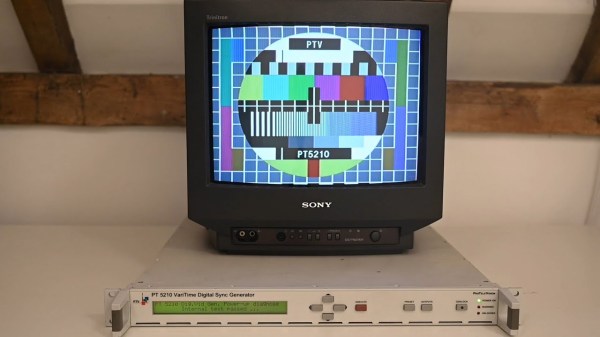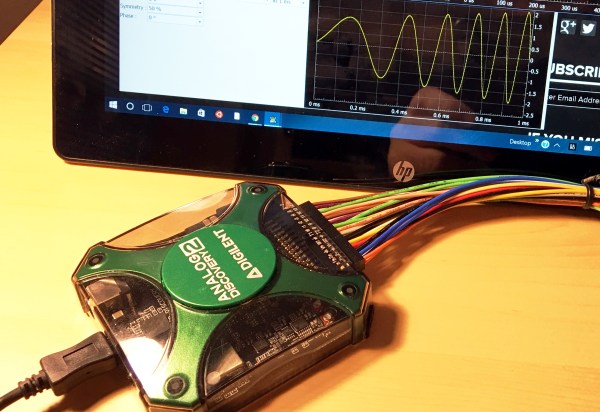While most countries have switched to digital broadcasting, and most broadcasts themselves have programming on 24/7 now, it’s hard to remember the ancient times of analog broadcasts that would eventually stop sometime late at night, displaying a test pattern instead of infomercials or reruns of an old sitcom. They were useful for various technical reasons including calibrating the analog signals. Some test patterns were simply camera feeds of physical cards, but if you wanted the most accurate and reliable test patterns you’d need a Philips pattern generator which created the pattern with hardware instead, and you can build your own now because the designs for these devices were recently open-sourced. Continue reading “Recreating An Analog TV Test Pattern”
pattern generator2 Articles
Review: Digilent Analog Discovery 2
I recently opened the mailbox to find a little device about the size of White Castle burger. It was an “Analog Discovery 2” from Digilent. It is hard to categorize exactly what it is. On the face of it, it is a USB scope and logic analyzer. But it is also a waveform generator, a DC power supply, a pattern generator, and a network analyzer.
I’ve looked at devices like this before. Some are better than others, but usually all the pieces don’t work well at the same time. That is, you can use the scope or you can use the signal generator. The ones based on microcontrollers often get worse as you add channels even. The Analog Discovery 2 is built around an FPGA which, if done right, should get around many of the problems associated with other small instrumentation devices.
I’d read good things about the Discovery 2, so I was anxious to put it through its paces. I will say it is an impressive piece of gear. There are a few things that I was less happy with, though, and I’ll try to give you a fair read on what I found both good and bad.













